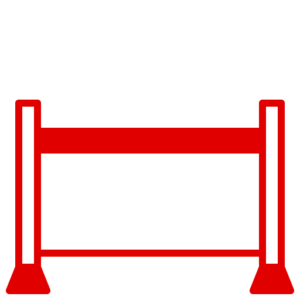News
Safeguarding Workplace Safety: Implementing Anti-Slip Measures for Lowe Stillages – A Professional Perspective
Welcome to Lowe Stillages & Cages, where maintaining stringent safety standards forms the bedrock of our commitment to you. We fervently strive to ensure the safety of all individuals engaging with our stillages, and as part of this ongoing dedication, we present this comprehensive guide on effectively implementing anti-slip measures for your stillages. This guide is designed to align your workplace safety practices with the Provision and Use of Work Equipment Regulations (PUWER).
Identifying Potential Slip Hazards
Improving safety starts with the crucial task of identifying potential slip hazards associated with stillages. These could arise due to slippery surfaces, unexpected spills, or loose debris, such as dust or oil. Keen observation and early detection of these risks lay the groundwork for creating a safer work environment.
Selecting Appropriate Anti-Slip Materials
Following hazard identification, the selection of suitable anti-slip materials for application on your stillages is the next step. Anti-slip coatings, mats, and adhesive tapes are just a few options designed to enhance traction and grip on stillage surfaces, thereby reducing the likelihood of slip-related incidents.
Applying Anti-Slip Measures
After procuring the right anti-slip materials, their correct application is of utmost importance. Anti-slip coatings, for example, can be applied to the surfaces of stillages to increase friction and grip. Alternatively, anti-slip mats or adhesive tapes can be strategically placed on high-contact areas.
Ensuring Comprehensive Coverage
For optimal effectiveness, anti-slip materials must adequately cover all necessary areas of the stillages. This encompasses walkways, handles, and load-bearing surfaces, with particular attention paid to high-risk areas such as corners and edges.
Considering Durability and Maintenance
Durability is a key factor in selecting anti-slip materials. Regular inspections and maintenance of these materials ensure they continue to provide the best protection against slip accidents. Prompt replacement or repair of damaged or worn-out materials is imperative.
Encouraging Communication and Training
Effective communication and training of employees significantly impact the success of anti-slip measures. Reinforce the importance of using designated anti-slip areas and avoiding potential hazards, while promoting safe work practices like using appropriate footwear with slip-resistant soles.
Conducting Regular Monitoring and Inspections
Regular inspections and a robust monitoring system ensure the ongoing effectiveness of anti-slip measures. Encourage employees to report any issues or concerns, which allows for proactive problem resolution.
Prioritising Cleanliness
Preventing spills and maintaining cleanliness in and around stillages is a critical safety measure. Implement efficient spill response protocols and promote good housekeeping practices, including regular cleaning and removal of potential slip hazards.
Maintaining Documentation for Compliance
Keeping a detailed record of all implemented anti-slip measures, including the materials used, application dates, and maintenance records, is vital. Documentation is key to demonstrating compliance with PUWER regulations and tracking the effectiveness of anti-slip measures over time.
By adhering to these steps, we can effectively implement anti-slip measures for stillages in line with PUWER guidelines. This ensures a safer working environment, minimises the risk of accidents, and protects the well-being of employees. At Lowe Stillages and Cages, we believe in working collaboratively to enhance safety – after all, your safety is our top priority.














